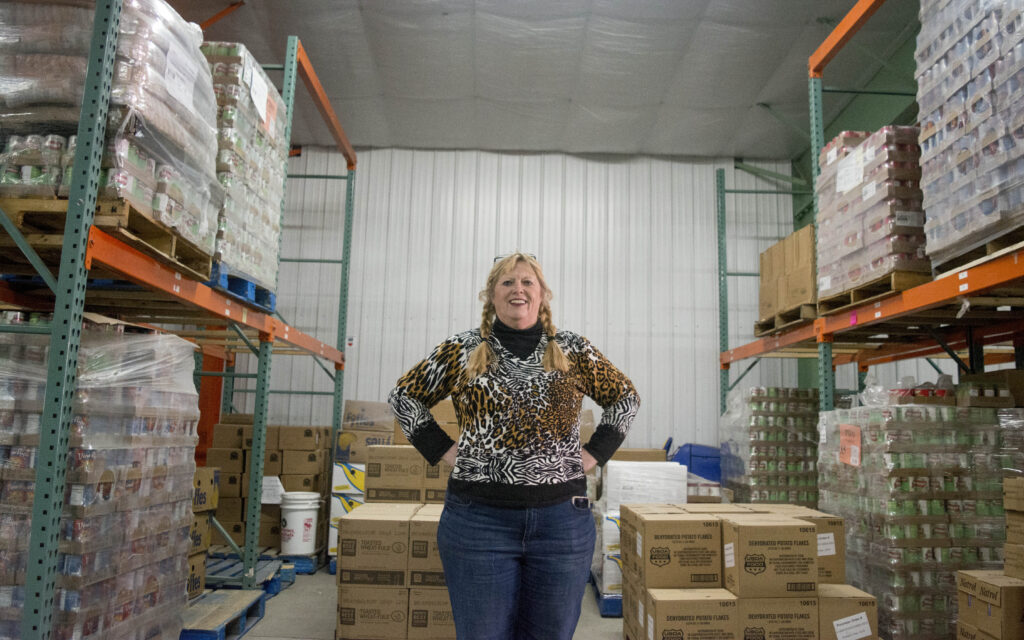
Maine wastes nearly 362,000 tons of food a year and the largest single contributor of waste generated by farms and commercial agriculture is Aroostook County, according to state environmentalists.
In total food waste from 15 categories, Aroostook is second only to Cumberland County, according to the Maine Department of Environmental Protection’s newly released 2024 Food Loss and Waste Generation Study.
Food production and shipping generate carbon emissions while food in landfills creates methane, according to the U.S. Department of Agriculture. Maine needs to keep more of what’s edible out of the trash and get it on people’s plates, researchers said. The study aims to help fight climate change and benefit Mainers who struggle with food insecurity.
“Food waste placed in landfills generates significant greenhouse gas emissions, so the Maine Climate Council’s Materials Management Task Force will make recommendations to the climate council on ways to reduce food loss and waste,” said David Madore, deputy commissioner at the Maine Department of Environmental Protection.
The DEP worked with Michigan-based Resource Recycling Systems, the University of Maine and the Center for EcoTechnology in Massachusetts on the study. Researchers analyzed food waste from residences, farms, grocery stores, schools, hospitals, jails, hotels and more.
Cumberland County produces the most overall waste at close to 78,000 tons a year, the study found. Aroostook, the largest county by area, creates more than 69,000 tons. Surplus food from Aroostook farms and commercial agriculture totals 54,000 tons a year — more than in Maine’s 15 other counties’ agricultural food waste put together.
Resource Recycling Systems estimated food waste from December 2023 to April 2024, according to the 113-page study. They used data from the Environmental Protection Agency, national databases and UMaine. Researchers also interviewed 70 people representing towns, retailers, facilities, food processors and food pantries. One farm was included.
In the farms and commercial agriculture category, the study focused on surplus food from four crops: apples, blueberries, corn and potatoes, using data from the USDA, UMaine and ReFED, a national nonprofit that aims to reduce food waste. Surplus food is still good for human consumption. Waste includes uneaten scraps and inedible parts like peels and pits, according to ReFED.

In Maine, about 30 percent of apples, 2 percent each of blueberries and corn, and 5 percent of potatoes are left in fields after harvest, ReFED estimated. Overall, those crops generate approximately 46,579 tons per year of surplus, the study stated.
That’s 1,694 tons of apples, 7,237 of blueberries, 30,713 of corn and 6,935 of potatoes.
Researchers used modeling and best estimates, Madore said. Data on the four crops came from the University of Maine’s George J. Mitchell Center for Sustainability Solutions and is a low range value, he said.
Maine’s solid waste management law suggests donating more unused food, turning produce people can’t eat into livestock feed and making compost from food scraps. Researchers also suggested gleaning — collecting fruits and vegetables left over after harvest.
“The Department is continuing to provide education and outreach…by working with schools, institutions, businesses, communities and others to reduce food waste and divert food from disposal to higher and better uses — feeding people, feeding animals, utilizing food waste in anaerobic digestion to recover energy and composting organics to enrich soil,” Madore said.
Goughan Farms of Caribou grows vegetables, strawberries, pumpkins and more. The unpredictable nature of crops and weather does lead to some waste, but it’s unintentional and the exact amount is hard to quantify, said owner Mark Goughan.
No one plants purposely to have surplus left over, he said. To ensure continuous fresh produce, the farm staggers planting when possible.
“You plant a few every week this time of year,” he said. “We only harvest what we can sell, and we try to time it all out across the growing season.”
When there is surplus after harvest, the farm generally deals with it in two ways. After all the good produce is sold, the farm invites farmers to take what’s left to feed their livestock, perhaps bartering for a cut of beef, Goughan said. What’s inedible is turned back into the soil as organic matter.
Aroostook hunger relief relief expert Dixie Shaw can’t believe that much food is wasted when producers donate truckloads for the hungry.
As director of hunger and relief services for Catholic Charities Maine, Shaw oversees warehouses in Monticello and Caribou that handle, on average, 70 tractor trailer loads of food each year, supplying 30 food pantries throughout Aroostook County.

Farmers, trucking companies and processors have donated so much food that they’ve sometimes shared it with other states, she said.
Food can end up as surplus because a shipper had a wrong delivery date, because some portion of a load was bruised or damaged, or even because a customer changed their mind, she said.
For Shaw, The County is well on its way to a surplus food solution: preserving what’s good and feeding the hungry.
“We do a fantastic job of reclaiming food,” she said. “We are so grateful for every single pallet and truck of fresh fruit and vegetables that comes our way. That stuff would end up being dumped if there wasn’t a place like us to take it.”







